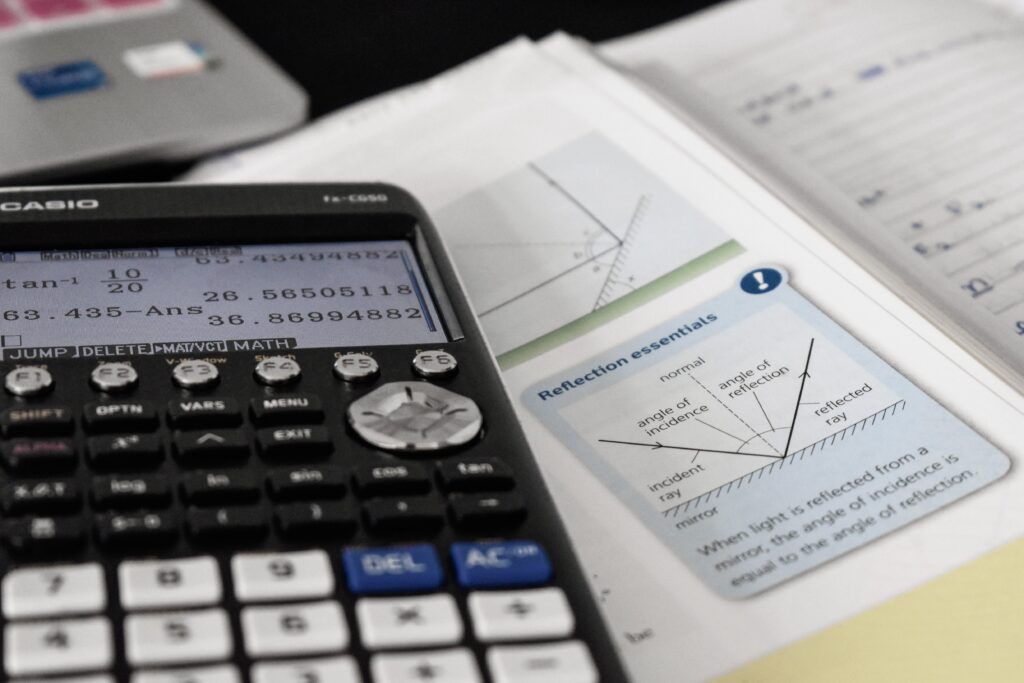Physics O level syllabus can be daunting. It ensures that you know the facts and their significance. O Level Physics concepts mostly revolve around five main themes: Measurements, Newtonian mechanics, Thermal Physics, Waves, Electricity, and Magnetism.
In this article, we deliver a comprehensive checklist of O Level Physics concepts that will serve as a study guide.

Section I: Measurement
In this section, the experimental skills mandatory for physics are discussed. For a better understanding of experimental data, the examiner expects students to know the following:
- Students should have an understanding of physical quantities and what they consist of.
- They should be able to recall SI units, for example, kg, A, s, K, mol, m, and other base quantities.
- They should recognize prefixes, their symbols, and how to convert between them. For example, milli(m), cent(c), and deci(d)
- They should be able to name a few scalars and vectors and explain what they mean. Students should know the graphical method for adding two vectors to find the resultant.
- Students should be able to select appropriate length and time measuring instruments based on their range and precision. Knowing techniques used to gain more accurate and precise results would also be helpful.
Section II: Newtonian Mechanics
In this section, students explore the contributions of Isaac Newton to the world of mechanics.
Kinematics
- Students should be able to recall the definitions and formulas of speed, velocity, and uniform acceleration. They should also be able to differentiate between uniform and non-uniform acceleration.
- They should be able to plot distance-time graphs and velocity-time graphs and deduce a body’s state of motion from the shape of the graph. Knowing how to calculate displacement by area under a velocity-time graph is also necessary.
- Students are required to state the acceleration of a body in free fall.
Dynamics
- Students should be familiar with balanced and unbalanced forces, mass, gravitational field, and their relationships.
- They should be capable of applying the three laws of motion of Isaac Newton to different circumstances.
- They should understand the concept of inertia and the relationship F = ma.
- They should identify and draw free-body diagrams of forces. Moreover, they should be able to solve problems for static point masses using the graphical method.
- They should be able to explain the effects of friction and free fall on an object with and without air resistance.
Turning Effect of Forces:
- Students should be able to describe and relate moments of force about a pivot to real-life examples. Furthermore, they should know how to state and apply the principle of moments for a body in equilibrium.
- They should recall and apply the formula of torque
- They should show an understanding of the point of center of gravity.
Pressure
- Students should be able to define and apply the relationship between pressure, force, and area. Knowledge of the relationship between density, mass, and volume is also required.
- They should be able to describe how to use a manometer and hydraulic press system.
- Additionally, it is essential to understand how a liquid column’s pressure relates to height and density.
Energy, Work, and Power
- Students need to know the different types of energies stored and the formulas related to them.
- They should be able to recall formulas related to power, work done, and efficiency. It is crucial to know how to use the energy conservation principle.
SECTION III: Thermal Physics
Thermal physics focuses on the energy changes between bodies due to the difference in temperatures.
- Students should be able to use the kinetic particle model to differentiate between solids, liquids, and gases.
- They should prove the random movement of molecules through the Brownian motion experiment and relate the molecular movement to kinetic energy and pressure.
- They should describe in microscopic terms how conduction, convection, and radiation occur. Additionally, they should know how thermal equilibrium is established.
- Students should be able to define internal energy, heat capacity, specific heat capacity, melting/solidification, boiling/condensation, latent heat, and specific latent heat.
- Remembering the relationship between energy transfer = mass x specific heat capacity x change in temperature and energy transfer = mass x specific latent heat is essential.
- Students should know how to sketch and analyze a cooling curve.
Section IV: Waves
The study of waves revolves around the science of sound and light. What makes this section valuable to the O Level Physics syllabus is the ability of waves to transfer energy at incredible speeds.
General Wave Properties:
- Students should show an understanding of wave motion, how waves transfer energy and sound transmission.
- They should be able to define and relate speed, frequency, wavelength, period, and amplitude. Graphical representation of these must also be known.
- They should be able to differentiate between longitudinal and transverse waves and explain how an echo is produced.
- Constants like the speed of sound are supposed to be memorized.
Light:
- Students should be able to describe the reflection and refraction of light, refractive index, critical angle, and total internal reflection.
- They should have a clear understanding of converging lenses and their focal lengths. They should also know how to draw ray diagrams.
Electromagnetic Spectrum:
- Students should know the order of the electromagnetic spectrum by heart. They should also know some typical uses for all these regions.
- Knowing some properties of electromagnetic waves, for example, their shared speed and type, would give students an edge.
SECTION V: Electricity and Magnetism
This is arguably the lengthiest and most interesting section. It contains a lot of equations, so make sure you have your O Level Physics formula sheet with you!
Static Electricity
- Students should be able to describe charges and electric fields and illustrate the electric fields around isolated point charge(s).
- They should be able to describe experiments involving electrostatic charging, for example, induction.
Current of Electricity
- Students should be able to state and explain the terms current, resistance, EMF, and potential difference. Equations that relate to them will be tested.
- It is also necessary to understand the relationship between a wire’s resistance, length, and cross-section.
- They should be able to describe the effect of temperature on a metallic conductor and sketch an I/V graph of it.
- They should know the difference between conventional current and electron flow.
D.C. Circuits
- Students should be able to draw all components of a circuit.
- They should know all the primary features of series and parallel circuits. They should be able to state their fundamental differences.
- They should describe the action of a potentiometer, thermistor, and light-dependent resistor.
Practical Electricity
- Students should be capable of explaining the terms live, neutral, and earth.
- They should know the hazards of using electricity. Furthermore, they should be able to calculate the cost of using electrical appliances in kWh.
Magnetism
- Students should know the properties of magnets and the process of inducing magnetism.
- They should distinguish between temporary and permanent magnets. Also, they should know how to describe and draw magnetic fields around bar magnets.
Electromagnetism
- Students must know about the magnetic effect of a current in electromagnets.
- They should explain the forces that current-carrying coils experience and the experiments related to them.
- They should describe the function of a DC motor.
- They should know how and where to apply Fleming’s left-hand rule.
Electromagnetic Induction
- With the help of Faraday’s experiments, students should be able to infer how magnetic fields induce EMF and what causes changes in them.
- They should describe the workings of a simple AC generator and sketch graphs of voltage against time. The operation and equations related to an iron-cored transformer are also needed.
SECTION VI: Radioactivity
This unit provides an evaluation of the risks and benefits of radiation.
- Students should be able to describe the composition of an atom, the nature of alpha, beta, and gamma particles, background radiation, nuclear fusion, and nuclear fission.
- They should be able to solve equations using nuclide notation and half-life calculations.
- Lastly, they should know the advantages and risks of radioactive emissions.
Study These Topics With Peak Tuitions
The Physics O Level syllabus requires immense attention to master. The key to doing well on exam day is practicing plenty of Physics O Level past papers. If this is too overwhelming to cope with, fill out this form to enroll in our O Level Physics classes.
Peak Tuition offers tutors that simplify O Level Physics concepts. We will ensure you get the grade you deserve. Book a trial lesson now!

